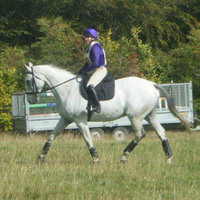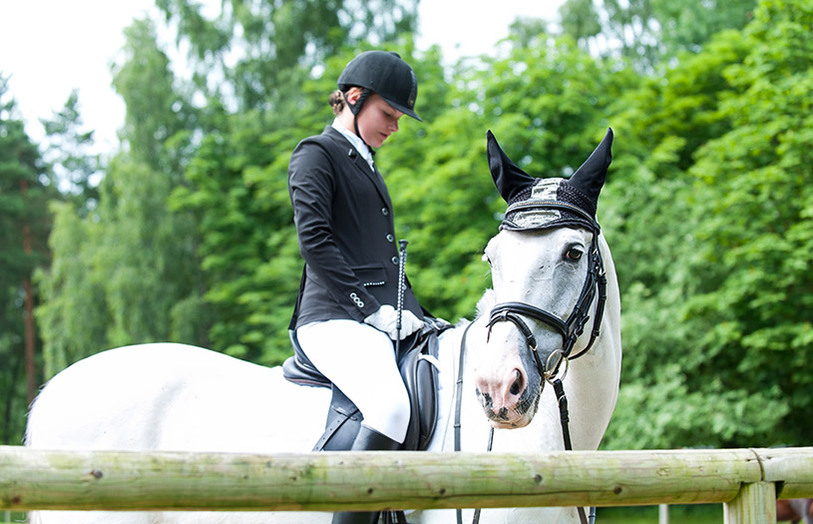
Are You & Your Horse Ready For Bitting Advice? The Steps You Need To Consider First
Equestrian Advice & Guides All Disciplines
Build your business profile for FREE and expose your services to thousands of potential clients!
Create my profile now!
In part one we looked at what we needed to do to get our butterflies to fly in formation by identifying the level of arousal that works best for you, positively viewing symptoms of anxiety and ways of increasing self confidence.
In part two we’ll look at:
It is a commonly held belief that individuals are either motivated or they are not. In other words, motivation is something you are born with and if not, you will need motivating by someone or something. The reality, as always, is more complicated!
Most people are motivated to do things that are enjoyable or at which they are successful. The challenge is how to keep motivated when things are not going well. Studies have shown that motivation is strengthened when individuals feel competent and in control of their performance. This sense of control and competence can be influenced both positively and negatively by your attributions.

Attributions are the reasons we give to explain why something happened, such as your skill or ability, the difficulty of the task, the effort you put in or luck. The attributions you make for your success or failure is important as it affects your motivation levels and your future expectation of success or failure. The way you explain your performance provides key information about how you view the level of control and influence you have over it. If you tend to take sole responsibility for the outcome, success or failure, you are considered to have an internal locus of control. If you tend to put good or bad outcomes down to factors outside of your control you are considered to have an external locus of control.
Individuals who have an internal locus of control believe that what they do influences the outcome they get. They will often explain their performance in terms of the effort they put in and the skills they have. Attributing outcomes to your own efforts creates emotions like pride “my preparation paid off”. This internalising of success helps to increase self-confidence.
Individuals who have an external locus of control believe outcomes are influenced by external factors such as luck, fate or other people / circumstances. When successful they tend to believe they have little control over the outcome and as a result can become de-motivated – “nothing I do makes any difference”, “I’m just unlucky”. Attributing failure to external factors can lead to frustration and anger as you feel powerless to do anything to change the outcome in the future.

To increase your feelings of control and competence, view any success as something within your control and unlikely to change. View a lack of success as temporary and within your ability to change. To protect against feelings of helplessness consider if any error or below expected performance can be attributed to lack of effort, lack of preparation, lack of practice or anything else that is within your control and could be done differently. This helps to promote motivation and encourage a positive attitude.
The goals you set should be performance related (within your control) rather than outcome related (outside of your control e.g. winning). Goals that focus on gains in skills and knowledge, effort levels and self-determined criteria for success (what success looks like to you) are more likely to increase motivation. To be a motivating force, success must be seen in terms of you exceeding your own goals rather than surpassing the performance of someone else.
There is a commonly held belief that all goals should be realistic, flexible and within a time frame. However, if the purpose of your goal setting is to get your butterflies to fly in formation, they need to provide a purpose for your efforts, help to identify any training or work needed and to highlight progress and improvement. If goals have too rigid a time frame they can actually be de-motivating and set you up to fail.
Aim to set yourself performance goals. These are goals that relate to improving your own personal best performance or improving compared to previous performances. Research suggests that individuals who set performance goals are more likely to adopt a problem solving approach to difficulties. They rarely perceive unsuccessful results as failure and instead develop strategies to overcome difficulties and demonstrate tremendous persistence in the face of adversity.

Process goals are there to support your performance goals. They should identify the actions, techniques or skills that are required to achieve success. They will be within your control and will contribute to achieving your performance goals.
There is nothing wrong with outcome goals (winning or beating someone else) as long as you recognise that they are less effective than performance goals because you only have partial control over the result. Focusing purely on the result can increase anxiety and reduce confidence and motivation.
The fundamental principle behind goal setting is for you to assess where you are currently, where you want to be and what steps you need to take to close the gap between the two.
Finally your butterflies are flying in a formation that works for you!
Psychological skills training should be approached in the same way as any other training and include regular practice of at least 10-15 minutes per day, 3-5 times per week. You may need to experiment with several techniques to find the most effective strategy to maintain the level of arousal that works for you.
In order to relax you need to ensure you are breathing properly. When you are anxious or tense there is a tendency to either hold your breath or breathe rapidly and shallowly from the upper chest. Learning to take a deep, slow, complete breath will usually trigger a relaxation response.

If your optimal level of arousal is more upbeat than relaxed you can generate energy by listening to upbeat music or physical exercise such as running, jumping or dancing. If that‘s not possible (or appropriate!) try the following breathing exercise:
It is impossible for a worried and anxious mind to exist in a calm and relaxed body – in other words do what you can to get a calm and relaxed body and your butterflies will fall into line!
You can find the first part of this two part article here > Getting Your Butterflies To Fly In Formation: A Guide To Using Anxiety To Benefit Performance - Part 1
The author of this article, Alison Lincoln, is a writer, coach and freelance groom. To find out more about her and her coaching work, please visit her website > https://www.alisonlincoln.co.uk/
References

